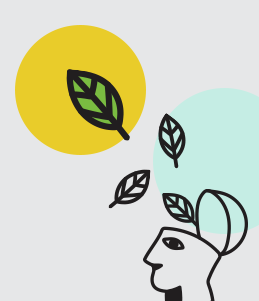Generating ideas
We think a lot; we get paid to think. So it’s hard not to come up with ideas because we’re always thinking. Coming up with good ideas isn’t quite so easy. There is, unfortunately, no magic formula. But there are ways to increase the likelihood of striking that eureka moment and coming up with a great idea. This month we have a guest writer – Cris (no H) Convery, an ideas monster here at Navig8.
Thinking
Train that brain. Read, play, draw. Whatever makes it tick. The more active your brain is in everyday life, the more success you’ll have in seeing the solutions to problems. Most ideas are born through the need to fix an issue. Ask yourself what that problem is. You want to aim to come up with lots of ideas in a short space of time, before running out of creative flair. You can then refine and mix the cream of the crop at the end.
Developing
After selecting the best ideas, you’ll want to be getting them off the paper and into fruition. Having ideas is the fun part. Developing ideas takes time and patience. Talking from a designer’s point-of-view, if it doesn’t work as a sketch, it certainly won’t work when you take it to production. But don’t lose hope if the solution doesn’t come in the first round of ideas. Leave it for a couple of days and come at it again from a different angle.
Inspect your briefs
When you receive a brief from the client, read it. Then re-read it. Go through and highlight all of the clues as to what they want (there are usually a fair few of these). Make sure you identify with the target audience before putting pen (pencil) to paper. If the brief is well put-together, you’ll find plenty of hints as to what the client is after. While reading, you should already have a few ideas bouncing about, so let’s continue...
Pick your tools
At this stage, don’t jump straight onto a piece of software and start drawing up vectors or laying out a document before having a solid vision on paper. Give yourself one hour, maximum, to come up with as many ideas as you can. Pen-to-paper is speedy and usually you’ll know if something’s working straightaway. Scamp out those initial ideas that you had while reading and highlighting the brief. If the ideas stop flowing, look for inspiration...
Inspiration is everywhere
Inspiration comes in many forms, and everyone has different ways of finding it. Try looking online, in books, magazines, around the room. Maybe do a ‘brainstorm diagram’ and see where that leads. As you’re walking about your daily life, you may suddenly get a superb idea – so it’s useful to have a little sketchbook to hand. Get it all down using whatever works for you. And don’t discard any idea. Some fresh eyes looking at your work may see how a ‘silly’ idea could be the winning idea.
One mighty hour
As I said earlier, give yourself one hour. I don’t know why this is exactly, but it works wonders. By limiting your time, you knock out a lot of fresh ideas that are usually very different from one another. If you go over the hour, the likelihood of doing variations of the same idea increases. If you don’t feel you’ve come up with anything that fits the brief properly after this hour, stop, and then...
Sit on it
Review your ideas. If there’s a team of you working on the same brief, go through them together. The Creative Director should be able to pick out the best ideas or even suggest how to improve on them, or see how an idea could be scaled up or down to fit the budget. If you’re working alone, go through and make sensible decisions. Or show them to someone you can trust to give good feedback.
If no ideas are working out, sit on them for a few days. Go back and have a look over them. In your time away from the brief, your subconscious may even have come up with the winning idea while not actively working on it. Do another hour, and repeat until you get it right.
Developing
Have your best concepts ready. Re-scamp them to a good finish. These scamps will allow you to open up your desired piece of software and get cracking straightaway. You’ll know what you want to achieve. You won’t be moving objects about trying to make something work – it just will. Spend a bit more time on the details within the software you’re using, giving each idea the little finishes they deserve before presenting the best to the client.
Blossoming
After presenting your ideas to the client, you should be at a stage where you’re working up the whole project based on a single vision. This is the stage that will take the most time. But in the end (I hope) you’ll see your idea blossom from a scamp into a fully-fledged piece of material that does exactly what the brief asked for... beautifully.
Great ideas are what we do, and we can do it for you.










